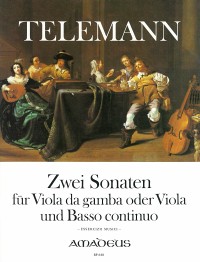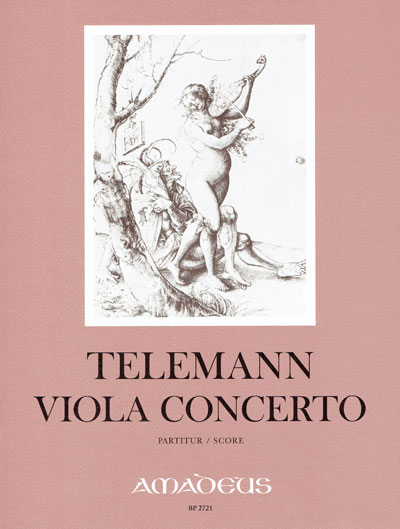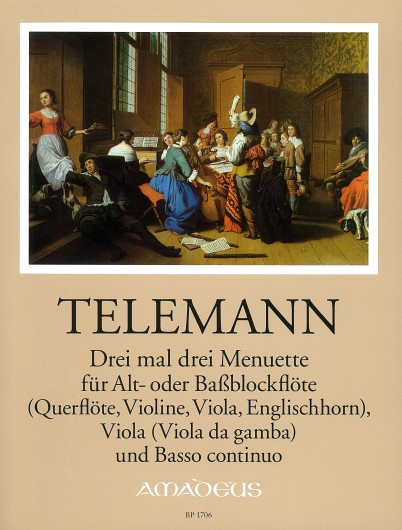
Alexander Presuhn (1870-1950) |
by Gerhardt Löffler
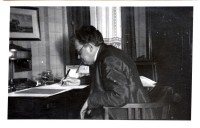 Initially, Alexander Presuhn, who was born in Graz (Austria) in 1870 and died in 1950 in Unterlenningen (near Stuttgart), took music lessons at the Schule des Steirischen Musikvereins (School of the Styrian Music Society) in his home town. He then studied the violin, composition at the conservatory and philosophy at the university in Leipzig, after which he worked at the Landestheater (county theatre) in Graz before spending 35 years working in a number of positions for the Stuttgarter Hoftheater (Court Theatre) which then became the Stuttgarter Landestheater: as concert master, solo viola player, conductor and finally as the musical director for plays.
Initially, Alexander Presuhn, who was born in Graz (Austria) in 1870 and died in 1950 in Unterlenningen (near Stuttgart), took music lessons at the Schule des Steirischen Musikvereins (School of the Styrian Music Society) in his home town. He then studied the violin, composition at the conservatory and philosophy at the university in Leipzig, after which he worked at the Landestheater (county theatre) in Graz before spending 35 years working in a number of positions for the Stuttgarter Hoftheater (Court Theatre) which then became the Stuttgarter Landestheater: as concert master, solo viola player, conductor and finally as the musical director for plays.
Not only did he arrange and compose approximately 50 music pieces for the stage, he also composed numerous pieces for and with “his” instrument, the viola.
PARTITA for string trio
The date at the end of the score 30th March 1935 denotes the date of the composition. At the beginning of the score, the composer, no doubt with a twinkle in his eye, has the following to say about his trio for violin, viola 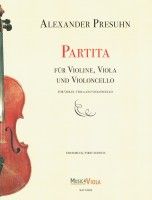 and violoncello: "The extremely well-tempered string trio. A series of 12 fugues and other harmless pieces; to provide cheerful and uplifting amusement ...”, dedicates it to his son on the occasion of a family celebration and signs it "composed by..."Alexander Presuhn.
and violoncello: "The extremely well-tempered string trio. A series of 12 fugues and other harmless pieces; to provide cheerful and uplifting amusement ...”, dedicates it to his son on the occasion of a family celebration and signs it "composed by..."Alexander Presuhn.
The 12 fugues mentioned by the composer form the structure of the entire, continuously composed opus in keeping with the style of a rondo.
An Intrada leads on to Fugue 1, this is followed by a Sarabande, followed by Fugue 2, which in turn leads on to a Tedesca, Fugue 3 and the Polacca. Presuhn remains true to the structure and therefore he composes quite a long Pavane to follow Fugue 4. Fugue 5 moves on to a Capriccio and then onto Fugue 6. The Minuet in B-major that follows has a Minore part, it finishes Fugue 6, a Gavotte in A-flat major, which manifests itself in the middle part of an à-la-Musette follows. Fugue 8 is next, here the solo violin bails out with a small Cadence and the opus moves into an A-major Tarantella. This extensive tarantella is fol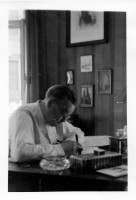 lowed in quick succession by Fugues 9 and 10, a small aria leads on to Fugue 11, the aria is repeated in the last Fugue 12 which becomes more flamboyant towards its end. The final of the opus, which is quite extensive with a total of 991 bars, is a classical Passacaglia, in which the violin and viola are allowed to vigorously accompany the expected ostinato played by the violoncello. It seems as if the violoncello feels encouraged, the finale changes from the 3/4 time of the Passacaglia to the 3/2 time of the coda. The violoncello also takes part in the last intensive, moving climax and then the piece bows out in a final C-major cord played in absolute pianissimo.
lowed in quick succession by Fugues 9 and 10, a small aria leads on to Fugue 11, the aria is repeated in the last Fugue 12 which becomes more flamboyant towards its end. The final of the opus, which is quite extensive with a total of 991 bars, is a classical Passacaglia, in which the violin and viola are allowed to vigorously accompany the expected ostinato played by the violoncello. It seems as if the violoncello feels encouraged, the finale changes from the 3/4 time of the Passacaglia to the 3/2 time of the coda. The violoncello also takes part in the last intensive, moving climax and then the piece bows out in a final C-major cord played in absolute pianissimo.
Autographic theme material and a score are privately owned by the publisher.
For this edition both individual themes as well as the score were used in order to try and gather information from both sources, adding what had obviously been omitted and adapting conflicting information to return to a more logical situation or to give the piece a more convincing sound.
Das ALTER (Old Age)
Alexander Presuhn calls this opus for viola and piano “Old Age” (after a poem by the German poet Eichendorff). It originated according to an entry in the autographic piano extract in August 1940.
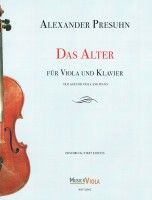 The title of the composer’s piece refers to a poem of the same name written by the German poet Joseph Freiherr von Eichendorff which is included in this issue. However, Eichendorff’s sonnet form is not reflected in the ternary form of the Presuhn composition.
The title of the composer’s piece refers to a poem of the same name written by the German poet Joseph Freiherr von Eichendorff which is included in this issue. However, Eichendorff’s sonnet form is not reflected in the ternary form of the Presuhn composition.
If the listener allows both the music and poetry to sink in, it seems likely that Presuhn is trying to mould the mood of the poem in music. To achieve this, he chose the key of B flat major and the ternary form with a coda; the musical form he virtually always chose for his works for solo viola.
Articulations in the autographic score are invariably only shown in the viola part of the piano extract. They are virtually completely missing in the piano part and the viola part. Hence, when published, the other parts were added correspondingly based on said viola part.
Virginia-Romance
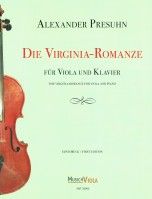 The Virginia Romance is dated July 5th, 1933. Unfortunately, it has not been possible to determine the occasion for which this piece was to be played nor the reason for its title. A sonorous piece, characterised by its theme in the prelude in G major, played in two different octaves by the viola, opens the short piece. Four (the part for viola is filled with double stops) cadences in b minor, d minor for the viola, one in f minor for the piano and the last in C major for viola again lead back to the initial theme, but now in g minor. A small transition in three four time connects back to the last appearance of the theme in the form of a coda, however this time it is played by the piano and in the original key of G major.
The Virginia Romance is dated July 5th, 1933. Unfortunately, it has not been possible to determine the occasion for which this piece was to be played nor the reason for its title. A sonorous piece, characterised by its theme in the prelude in G major, played in two different octaves by the viola, opens the short piece. Four (the part for viola is filled with double stops) cadences in b minor, d minor for the viola, one in f minor for the piano and the last in C major for viola again lead back to the initial theme, but now in g minor. A small transition in three four time connects back to the last appearance of the theme in the form of a coda, however this time it is played by the piano and in the original key of G major.
Gerhardt Löffler
Gerhardt Löffler was born and raised in Karlsruhe and is the great-grandson of Alexander Presuhn and publisher of the new first editions described above. He studied at the Staatliche Hochschule für Musik und Darstellende Kunst in Stuttgart, graduating with a diploma in music education and a diploma in orchestral music. His teachers were Gunter Teuffel, solo violist RSO and Prof. Hermann Voss, Melos-Quartett.
| Hermann Ritter |
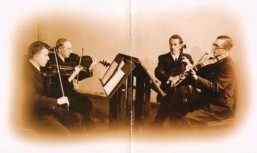
» His composer profile
| You may also be interested in |
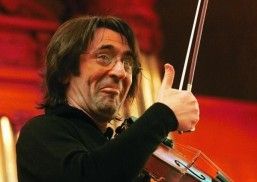
On the relationship between violin and viola, Bashmet said the violin was more dramatic, but the viola more philosophical. He described the peculiarly sound of the viola as the "sound of the cosmos". The viola is not male and not feminine, it is simply beauty.
» To the blog
| Available in our online shop |
| Blog overview |
» To the blog list
| Newsletter |
 Do you don't want to miss any news regarding viola anymore? Our newsletter will keep you informed.
Do you don't want to miss any news regarding viola anymore? Our newsletter will keep you informed.» Subscribe to our Newsletter for free
 Visit us on Facebook. The news articles are also posted.
Visit us on Facebook. The news articles are also posted.» To Facebook
